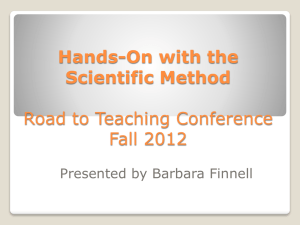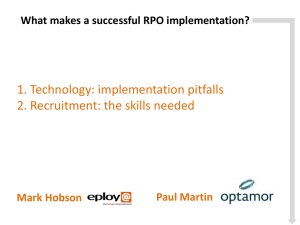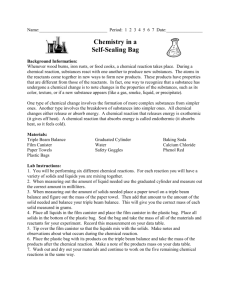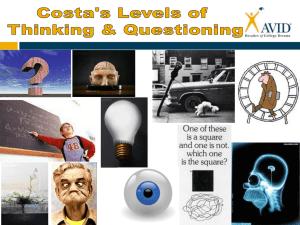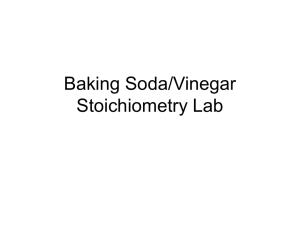Energy Benchmark SC.B.1.2.2 The student recognizes various forms
advertisement
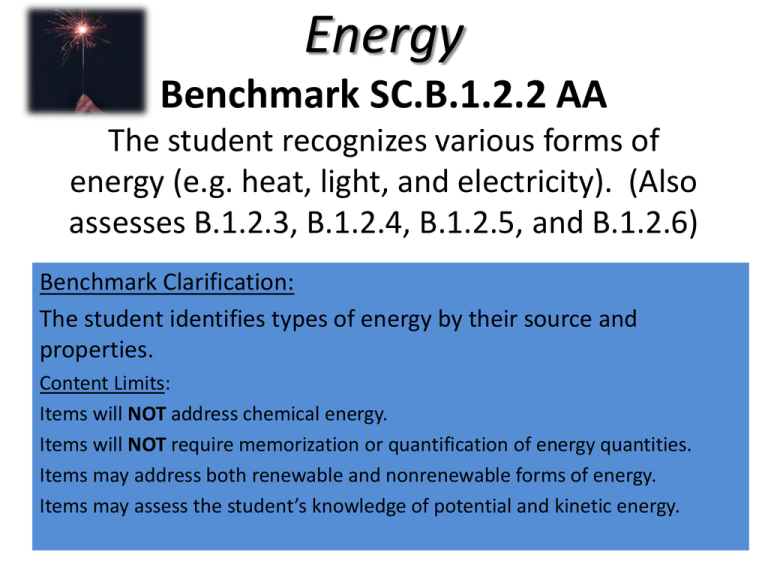
Energy Benchmark SC.B.1.2.2 AA The student recognizes various forms of energy (e.g. heat, light, and electricity). (Also assesses B.1.2.3, B.1.2.4, B.1.2.5, and B.1.2.6) Benchmark Clarification: The student identifies types of energy by their source and properties. Content Limits: Items will NOT address chemical energy. Items will NOT require memorization or quantification of energy quantities. Items may address both renewable and nonrenewable forms of energy. Items may assess the student’s knowledge of potential and kinetic energy. Energy • Energy can cause motion and can also cause changes in matter. • It can be transferred from object or system to another. • Energy cannot be created or destroyed, this is known as the law of conservation of energy. • Energy comes in many different forms. Forms of Energy Mechanical energy • Energy an object has because of its motion or position • There are two kinds of mechanical energy: Kinetic energy – energy an object has because it is moving Potential energy – energy an object has because of its position or shape Thermal Energy (also called heat energy) • Moving particles have energy. The energy of moving particles is called heat energy. • Temperature is the average speed of the particles in a substance. Radiant (also called light energy) Light is a form on energy that travels in waves and can move through empty space where there is no air • The light you see is part of waves called the electromagnetic spectrum • Most objects that emit light also emit heat. Electricity/Magnetism Energy produced by electric charges. • An electric current results from the movement of electrons • Electricity and magnetism are closely related because both are caused by negative and positive charges in matter. • Electricity can produce magnetism, and magnetism can produce electricity. Other Forms of Energy • Nuclear energy - energy contained in the nuclei of atoms; energy used to generate electricity in a nuclear power plant • Chemical energy – energy stored in chemical bonds; energy stored in the foods you eat; energy stored in fuels such as wood or gasoline • Sound energy – energy carried by sound waves Benchmark SC.B.1.2.3 The student knows that most things that emit light also emit heat. Benchmark Clarification: The student identifies radiation in the form of light and heat. Content Limits: Items will NOT require unit conversions to compare data. Energy from the Sun • Energy from the sun travels as radiation. The sun produces several kinds of radiation: Light – is radiation we see Heat – radiation we feel X rays and ultraviolet rays – are produced from the sun. Radio waves – we hear as static on the radio Benchmark SC.B.1.2.4 The student knows the many ways in which energy can be transformed from one type to another. Examples: • Potential to kinetic or kinetic to potential • Chemical to mechanical • Electrical to light Benchmark SC.B.1.2.5 The student knows that various forms of energy (e.g., mechanical, chemical, electrical, magnetic, nuclear, and radiant) can be measured in ways that make it possible to determine the amount of energy that is transformed. Benchmark Clarification: The student identifies energy transformations by changes that occur and knows ways to measure energy changes. Content Limits: Items will NOT require the student to quantify energy transfers. Items will NOT require unit conversions to compare data. Items may ask students to identify the various forms of energy. Benchmark SC.B.1.2.6 The student knows ways that heat can move from one object to another. Examples: conduction – the transfer of heat from substance to another through direct contact. convection – the movement of heat energy through liquids and gases in currents radiation – the transfer of energy as electromagnetic waves Hypothesis: If a liquid is mixed with baking soda and calcium chloride, then ………… 1. Get a sealed bag of baking soda and calcium chloride pellets from your teacher. Pay attention to which substance your teacher says there is more of in the bag. 2. Examine them while they are still in the bag. Describe one property of each substance. Put a star next to the substance that there is more of in the bag. Substance Physical Property Baking soda Calcium chloride 3. Shake the sealed bag in order to mix the two powders. 4. Unseal the Ziploc bag containing the baking soda and calcium chloride and carefully place the vial UNOPENED with the phenol red inside in a upright position (facing up). 5. Carefully seal the bag, squeezing all of the excess air out without opening the vial of phenol red. 6. Once the bag is completely sealed and in the pie pan, THROUGH the bag (without opening the bag) pop off the top of the vial and tip it over thoroughly mixing the contents in the bag. Immediately place the bag into your aluminum pie pan and DO NOT pick it up again at all! Property Observation Color of the contents of the bag Temperature of the bag (hot or cold) Amount of gas (a little puffy or a lot) Results/Conclusion: 1. Create a Venn Diagram to compare your observations with another group that your teacher tells you to switch with. Give a possible reason why there may have been differences. 2. Explain the flow of energy during the experiment. (chemical thermal)

